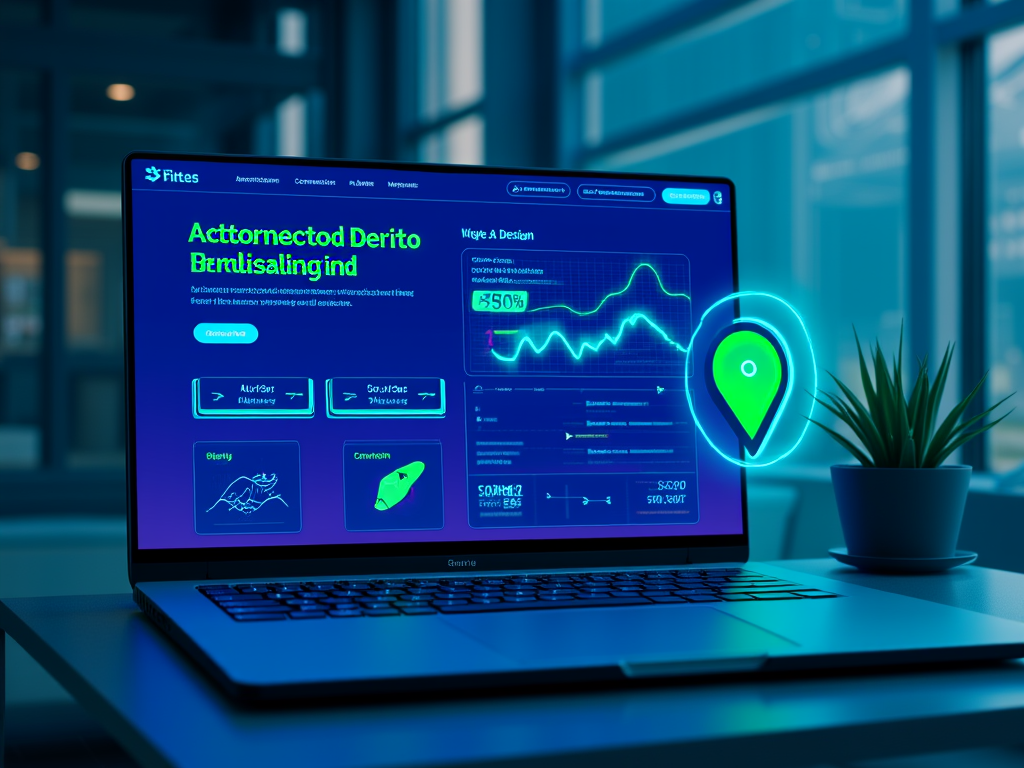The role of website speed in customer retention
Introduction
Website speed is not merely a number; it’s a heartbeat. In the symphony of online business, this heartbeat determines whether visitors dance along with your content or leave the stage in disinterest. Amidst the chaos of today's digital landscape, where users are always just a leery click away from jumping ship, the importance of rapid page load times for retaining customers cannot be overstated. Understanding the intricate dance between website speed and customer loyalty unveils a narrative that goes beyond statistics—it delves deeply into consumer behavior and expectations.
The Business Impact of Website Speed
How Website Speed Affects Customer Retention
In the vast ocean of the internet, website speed is the lifeline that keeps customers afloat. Imagine this: your potential customer is captivated by your offerings, yet—wait—what’s that? A slow-loading page? Their excitement deflates like a punctured balloon. Studies reveal that 36.8% of consumers pledge to avoid a site after a poor speed experience, an alarming statistic that underscores the delicate relationship between speed and retention.
Consider the impact of that first impression:
- Bounce Rate Increase: A staggering 1-second delay can catapult your bounce probability by 32%. The impatience is palpable—as their eyes glaze over, they’re already gone, seeking a faster haven.
- Cart Abandonment: For an ecommerce site, every second counts. Envision this: 76% of consumers have abandoned their shopping carts, leaving behind dreams of newfound products due to frustrating waits. You’re not just risking sales; you’re missing out on forming bonds with potential repeat customers.
- Customer Loyalty: The emotional toll is significant. Half of your visitors might toss aside any remnants of trust after just five slow experiences. Those lost connections transform into frayed threads of brand loyalty.
Website Speed and User Experience
Delving into the emotional side of things, a fast website isn’t just a technical necessity; it’s an act of empathy towards your users. Envision the relief of rapid load times—a site welcoming users like an old friend. With visitors expecting pages to load in 2-3 seconds, any delay feels akin to a cold shoulder. What if that expectation rises further? Did you know that 40% of users vanish if a page takes longer than three seconds?
As we walk through the nuances of user experience, let’s pin down some key examples:
- Sites boasting load times under 2 seconds on mobile witness a 15% boost in conversion rates.
- In the ecommerce realm, websites that load in the blink of an eye convert three times better than their sluggish counterparts.
- Speed creates a perception of professionalism; an astonishing 53% of consumers believe website speed mirrors brand reputation.
SEO and Website Speed: A Symbiotic Relationship
Website speed unfurls another layer of significance when linked to search engine optimization (SEO). It is where the realms of user experience and search algorithms entwine:
- Google counts page speed as a steadfast ranking factor, showcasing speeds that prioritize user satisfaction. A slower site not only disheartens users but causes higher bounce rates, tarnishing your search standings.
- As we transition to a mobile-first indexing model, the need for speed on mobile sites is urgent. The data is staggering: mobile traffic leads the charge, making the demand for swift site performance undeniable.
- Enter Google’s Core Web Vitals: the spotlight on loading time, interactivity, and visual stability makes speed a non-negotiable aspect of maintaining high rankings on SERPs.
Practical Tips for Optimizing Website Speed and Enhancing Retention
Technical Strategies to Boost Speed
Optimizing website speed isn’t an abstract task. There are tangible, actionable strategies that businesses must implement, transforming speed from an ideal into a reality:
- Image Compression: Envision turning heavy images into lightweight maestros that keep pages agile while maintaining allure.
- Code Minification and Cleanup: It’s about trimming the fat—reducing unnecessary characters from HTML, JavaScript, and CSS to streamline delivery.
- Caching: Utilizing both browser and server-side caching is akin to serving a warm cup of coffee—prompt and right at the user’s fingertips.
- Content Delivery Network (CDN): Think of CDNs as laying out tiny delivery stations for your content, ensuring every visitor receives their dose of information swiftly, no matter where they are.
- Mobile Optimization: Adapting to mobile shouldn’t be an afterthought; it must be an integral part of your web strategy, enhancing the experience for users accessing your site on the go.
Monitoring and Continuous Improvement
Now, let’s talk about the mechanics of maintenance. Speed isn’t a one-and-done affair. It requires vigilant monitoring to ensure peak performance. Businesses should:
- Conduct regular speed tests, using real browsers and devices to gauge user experience accurately.
- Identify bottlenecks and address issues efficiently, never letting speed slip into mediocrity.
- Align with core web vitals that enhance user experience and keep search engines content.
Example Impact: Automotive Industry
Consider the automotive industry’s fast-paced nature. After enhancing their mobile responsiveness for speed, BMW witnessed their click-through rates soar from a mere 8% to a staggering 30%—a near quadruple increase. This isn’t just a statistic; it’s a vivid narrative of how speed optimization nurtures deeper engagement and fosters lasting loyalty.
In this realm, speed is not just a factor of functionality; it becomes the fuel for emotional connections and a loyalty bond with customers.
BEST OFFERS:
Do you want to create your own company website or create your own online business on the Internet?
– WEB HOSTING
– DOMAIN REGISTRATION
– WEB DEVELOPMENT
– SITE BUILDER



Measuring Success: The Metrics of Website Speed and Customer Retention
Understanding the intricate relationship between website speed and customer retention requires more than anecdotal evidence; it necessitates a framework for measurement. Key performance indicators (KPIs) can illuminate the paths toward faster speeds and enhanced loyalty.
Essential Metrics to Monitor
-
Page Load Time: Measure the arrival of your homepage and key landing pages. Tools like Google PageSpeed Insights provide not only speed metrics but also actionable insights for improvement.
-
Time to First Byte (TTFB): This metric assesses the time taken for a browser to receive the first byte of data from your server. A low TTFB often indicates a well-optimized server and responsive backend architecture.
-
Bounce Rate: As mentioned, this metric highlights the percentage of visitors leaving after viewing just one page. Reducing the bounce rate through speed optimization can substantially increase engagement.
-
Conversion Rate: Keep an eye on how many visitors turn into paying customers or take the desired action. Improvements in speed often lead to higher conversion rates, providing a clear link between performance and financial success.
-
Customer Satisfaction Scores: Utilize surveys or tools like Qualtrics and NPS to gather feedback directly from users about their experience. Observing patterns in feedback can guide strategic decisions on speed improvements.
The Emotional Connection: How Speed Fosters Loyalty
Website speed is more than metrics—it's about building an emotional connection with your audience. Think of it as a first date. If that date goes well, there's a stronger chance of a relationship forming. A speedy website strikes a chord with visitors, showcasing respect for their time and enhancing their overall experience.
A memorable example comes from the world of retail: when Amazon invested heavily in their website's speed and performance, they reaped a colossal $1.6 billion in sales for every additional second of load speed they gained. They recognized that each moment mattered, and their investment transformed customer loyalty into tangible revenue.
The Future of Website Speed: Looking Ahead
Moving forward, the importance of website speed will only become more pronounced. With emerging technologies such as Progressive Web Apps (PWAs) and Accelerated Mobile Pages (AMP), users will continue to demand faster, more engaging experiences. Brands hesitant to adapt may find themselves isolated in a sea of competitors, while those embracing speed will forge stronger connections with customers.
Conclusion: Speed as a Strategic Advantage
As we navigate the intricacies of customer retention, website speed emerges not simply as an operational efficiency but as a strategic advantage. The endeavor to enhance website speed—rooted in technical adjustments, continuous monitoring, and fostering emotional bonds with users—will determine which brands thrive in the digital marketplace.
In the grand ballet of online commerce, the dynamic between speed and retention plays out as a delicate choreography. Prioritizing speed transformation isn’t an option in today’s ever-evolving landscape; it’s a necessity. As consumers' online habits continue to evolve alongside technological advancements, businesses must rise to the occasion, ensuring that their website performance is synonymous with exceptional user experience.
Explore More
For those interested in further exploration of the topic of website speed and retention, here are some valuable insights encapsulated in these videos:
- The Importance of Website Speed
- How to Improve Your Website Speed
- Website Performance and User Experience
References
- Sucuri – Website Performance Research
- Gartner – Consumer Behavior Studies
- Shopify – E-commerce Performance Data
- Google Developers – Page Speed Insights
- Speedtest – Web Performance Analysis
- Qualtrics – Customer Experience Management
- NPS – Net Promoter Score Tools
With an eye toward speed and a heart for users, your digital experience can flourish, fostering loyalty that echoes through the corridors of commerce.
FINDDOMAIN.GE (Internet services LLC) is a very interesting and rapidly developing IT company. The main directions are: web development, domain and web hosting. It also offers clients sub-services and outsourcing related to the main services.
BEST OFFERS:
Do you want to create your own company website or create your own online business on the Internet?
– WEB HOSTING
– DOMAIN REGISTRATION
– WEB DEVELOPMENT
– SITE BUILDER





![Website Hosting Providers in [Local Area]: What to Choose](https://besthosting.ge/wp-content/uploads/2025/08/website-hosting-providers-in-local-area-what-to-choose.jpg)
![WordPress Website Experts in [Your City]](https://besthosting.ge/wp-content/uploads/2025/08/wordpress-website-experts-in-your-city.jpg)

![Web Development Services in [Local Area] for E-commerce](https://besthosting.ge/wp-content/uploads/2025/08/web-development-services-ecommerce-local-area.jpg)